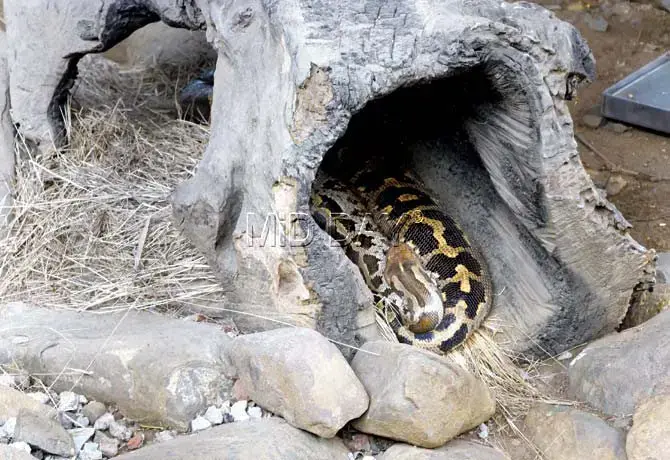
A six-foot-long Indian Rock Python was safely rescued from a location near a human settlement in Aarey Milk Colony on Tuesday night. The rescue operation was carried out by Aditya Shinde, a wildlife enthusiast and snake rescuer associated with NGO Wildlife Welfare Association.
Speaking about the incident, Shinde said, “On Tuesday night, I received a call from a local resident in Aarey Milk Colony who reported spotting a snake close to his house. Upon reaching the location, I identified the snake as a large Indian Rock Python. The reptile was safely rescued and immediately released back into its natural habitat.”
A six-foot-long Indian Rock Python was rescued near a human settlement in Aarey Milk Colony on Tuesday night by wildlife rescuer Aditya Shinde from the Wildlife Welfare Association (WWA). Shinde responded to a call from a local resident and safely relocated the snake to its… pic.twitter.com/IQu5b0CEnc
— Mid Day (@mid_day) April 2, 2025
About the Indian Rock Python
According to the Indian Biodiversity Portal, the Indian Rock Python is one of the most well-known and largest-growing snake species in India. In most parts of the country, it is the largest species found, except in the North-East, where the Burmese Python takes its place. It is usually identifiable by its considerable size, dark irregular patches, pinkish head, and slow movement.
The portal further states that the Indian Rock Python is primarily a nocturnal species, though it can occasionally be seen during the day while basking or opportunistically foraging for prey. Although it is mainly terrestrial, it is also an adept climber, often ascending to significant heights to roost. The python’s locomotion is generally slow, and its behaviour is typically non-aggressive. When threatened, it attempts to escape and hide in its natural surroundings. However, if provoked, it coils its body with its head slightly raised above the ground, producing a hissing sound similar to that of a Russell’s Viper. If further disturbed, it may bite repeatedly. When caught, the python tightly coils around the captor`s limbs in an attempt to suffocate them.
The Indian Rock Python is a protected species under Schedule I of the Wildlife Protection Act, 1972, which grants it the highest level of legal protection in India.












